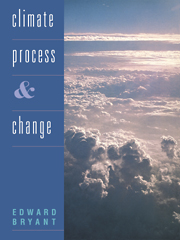9 - Ecosystem impacts of climate change
Published online by Cambridge University Press: 05 June 2012
Summary
PRESENT DISTRIBUTION OF BIOME TYPES
An ecosystem is a system of interactions of a community of organisms with its environment. Involved in this interaction is mineral cycling, energy flow and population dynamics. The largest fundamental unit of an ecosystem is the biome, which consists of similar plants and animals that can be distinguished from each other by vegetation and climate. The biota (plants and animals) of each kind of biome have similar characteristics worldwide. Common biomes include grasslands, tundra, northern coniferous forests and tropical rainforests. Similar biomes comprise a biome type. About two-thirds of biome types relate chiefly to climate factors characterised mainly by temperature and rainfall, while the others relate to marine or wetland environments, for example the rocky littoral zone. The boundaries, or tolerance limits, of climatically determined biome types are controlled by two laws. Justus von Liebig's law of the minimum states that plants have minimum requirements for growth and reproduction, controlled by a range of factors. The factor that is least available has the greatest effect on plants, such that small changes in that parameter can exert a profound influence on a plant's survival. The law of the maximum, Shelford's law of tolerance, states that too much of a certain factor also limits a plant's existence. As a result of both these laws, and other environmental factors, biome types show up spatially as distinct zones of vegetation, mainly spaced parallel to the temperature gradient that exists either latitudinally between the equator and the poles, or with elevation on mountains.
- Type
- Chapter
- Information
- Climate Process and Change , pp. 182 - 198Publisher: Cambridge University PressPrint publication year: 1997



